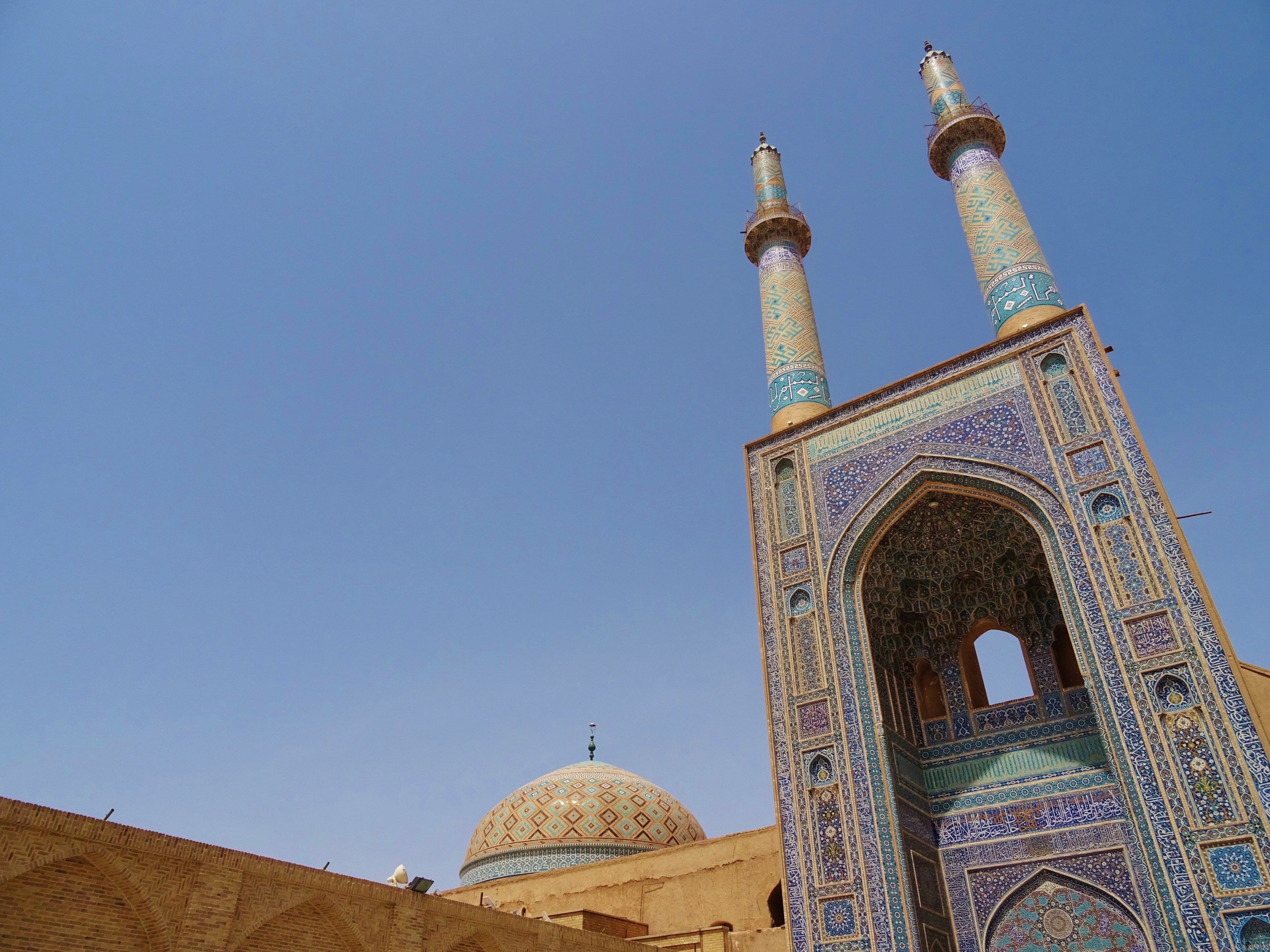Yazd
City of Wind Catchers

In my first post about Iran I said that there was much more to the country than tiled domes and minarets, and classical Persian architecture in ancient cities surrounded by desert. This remains true, but the domes, minarets and classical architecture do, of course, exist.
Yazd, Esfahan and Shiraz are three places which feature on many a traditional circuit for visitors to Iran – and with good reason: they provide great examples of the country’s rich heritage in wonderful settings. In a series of three postings, I’ll look at each of these cities in turn.
The ancient city of Yazd lies in Iran’s Central Plateau, surrounded by desert. Reputedly founded by Alexander the Great, the city’s position on important trading routes saw it become a flourishing centre for silk, textiles and carpets – industries which still thrive here today.
When Marco Polo passed through in 1272, he described it as a splendid city. Unlike many other settlements in the region, Yazd escaped the terror and destruction wrought by Genghis Khan and Tamerlane and their armies in the 13th and 14th centuries. Today, it’s home to some half a million people.
Click on the photographs to enlarge and see the captions:
Much of the old city of Yazd is built of sun-dried mud bricks, giving it an appealing uniform colour and appearance.
Spreading out from the main bazaar is a residential district with a labyrinth of lanes or kuches. Lined with high biscuit-coloured walls, one lane can easily look like another and wandering around it’s easy to get lost. The twin minarets of the 15th-century Jameh Mosque, which at 48m high tower above the low-rise buildings of the old town, provide a handy landmark, however, for getting one’s bearings.
Yazd’s many wind towers – or badgirs – have led to it being dubbed the ‘city of wind catchers’. The traditional four- or eight-sided towers use the wind as a natural form of air-conditioning by directing air down inside them – sometimes to a cooling pool – while allowing warm air to rise and escape through a separate shaft.
Yazd is home to Iran’s second-largest Zoroastrian community.
In pre-Islamic times, Zoroastrianism was the main religion in central Iran. Zoroastrian are sometimes called fire worshippers because their temples contain an eternally burning flame. Followers of the religion believe burying a corpse would pollute the earth so they traditionally laid out the deceased in ‘towers of silence’ where vultures would pick the bones clean. Today, their dead are buried in specially lined graves.
Whether they were Zoroastrian or Muslim, the Iranians I met were all very welcoming. Before I went to Iran, my friends divided into two groups: those who had never been and warned of the ‘dangers’ that – in their view – surely lurked, and those who had visited the country and remarked how friendly everyone was.
My personal experience in Iran certainly backs up the latter. It wasn’t only shopkeepers, waiters, hotel staff and volunteers at the mosques who were helpful: people would start conversations in the street or go out of their way to assist. To the wary, I’d say put aside your fears and instead ‘dare’ to discover Iran for yourself. And remember to put Yazd on your list of places to visit.
RETURN
